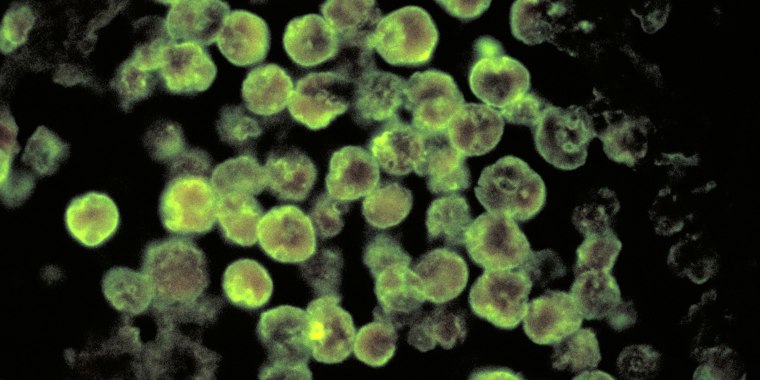A teenager in Florida was recently hospitalized due to a rare case of “brain-eating amoeba.”
Caleb Ziegelbauer, 13, was taken to the emergency room after experiencing what was described to NBC2, an NBC affiliate in Fort Myers, Florida, as headaches and hallucinations. These symptoms began to occur about one week after he and his family took a trip to a beach in Port Charlotte, Florida on July 1.
After the teen was taken to an emergency room by his parents, doctors at the hospital were told that Naegleria fowleri, commonly referred to as the “brain-eating amoeba,” had entered his body through his nose before infecting his brain. In the weeks since, he has been battling for his life at Golisano Children’s Hospital.
According to the CDC, Naegleria fowleri is a single-cell organism found in warm bodies of freshwater. It can cause a rare infection in the brain called primary amebic meningoencephalitis when entering the body through the nose.
Cases of PAM are extremely rare. Infections become more common when prolonged heat causes a decrease in water levels and rise of water temperatures.
Initial symptoms include headache, fever, nausea, or vomiting, later followed by stuff neck, confusion, lack of attention, balance loss, seizures, or hallucinations.
Caleb’s aunt Katie Chiet said that many people “don’t get to the hospital quickly enough,” and said the family is "hoping" that they sought care in time.
“Unfortunately the Naegleria fowleri presents as if a child has meningitis,” she said, which is why it took time for his family to realize his symptoms could’ve been linked to exposure in the water at the beach.
She said that since he was hospitalized, the inflammation in the teenager’s brain had grown. In a Facebook post on July 16, she shared further updates on her nephew, explaining that he was in the intensive care unit.
“He was extubated last night; he’s breathing on his own, stable, and being loved on by his parents,” she wrote. “He’s in a minimally conscious state, so he has very short periods of awareness/wakefulness, but is otherwise sleeping and fighting like hell. His MRI shows more inflammation in his brain, especially by his nasal canal.”
Chiet called the experience “lonely and isolating,” explaining, “Because we don’t know where we are on any kind of timeline. It’s day 17 and Caleb is still breathing on his own. Are we in the clear? Are we on the path to healing? Are we waiting for something else to happen.”
Caleb’s aunt Elizabeth Ziegelbaur said her nephew had the “kindest soul,” adding, “He’s so strong. Like the fighting on the outside, that’s what we’re doing. He is fighting his little heart out on the inside.”
TODAY has reached out to Chiet and Ziegelbaur for comment but did not hear back at the time this article was published.
Earlier this month, another case of of Naegleria fowleri was detected in a Missouri resident who was exposed at Lake of Three Fires in Iowa, which caused the beach to close temporarily effective Thursday, July 7.
Less than two weeks later, health officials reported that the individual had died.
Related:
